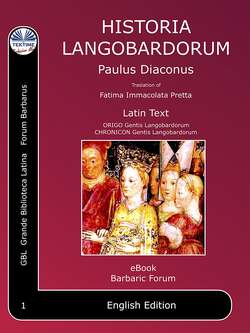Читать книгу Historia Langobardorum - Paolo Diacono – Paulus Diaconus - Страница 6
The history
ОглавлениеWhy publish an old and manifestly biased book in Latin? The reason is right there, in the definition of "part": written history is always part because it is generated by a "cultural structure"; entity that often coincides with the "nation-state". In practice for history, the same concept is valid for art, each era gives a different judgment on a given work of art. As a boy, when I studied art in high school, I went to the school library to consult a famous and beautiful series dedicated to painters, in those books the critical judgments of art experts and artists of different eras were reported. There you could see the change of opinion over time. So a Baroque work first pleases, then is despised and then returns to be found beautiful. This change of opinion is closely linked to historical events and social changes. To explain some basic concepts I will continue to use the art-history parallelism, which I believe is the most suitable. Here I briefly describe a personal experience I had at the University in taking a Medieval History exam. Attending the exams of some students of my age, I noticed their difficulty in defining historical periods, their attachment to dates. The teacher of the Statale di Milano was greatly irritated to see the inability to argue about the beginning and end dates of the Middle Ages. The dates are school conventions, the ancient age does not end a day in a certain place, but it is a border that shifts and brings with it social changes, often not uniform. The Gothic kingdom in Italy is perhaps already Middle Ages but we consider it late ancient, because we tend to start the Middle Ages in Italy with the twenty years of the Gothic wars or with the Lombard invasion in the peninsula. The right answer to the question `` when does the Middle Ages begin? '' Is the conventional date of the dismissal of the last Roman emperor of the West, accompanied by the clarification that it is, in reality, a long transition period going from Odoacre, to the Lombards, and does not involve the whole territory uniformly. If we look at art, we see the splendid mosaics of Ravenna, but then the imposing mausoleum of Theodoric appears, I point out that, after these, we move on to a paleo-Christian poor art: art marks well the passage from the ancient world to the new times. In the same way, regardless of the date on which Columbus was discovered to have discovered America, the art of the second quarter of Florence already showed the Renaissance, which appears briefly and immediately dissolves into Mannerism which will become Baroque already in the Michelangelo's dome of San Pietro . Thus the Municipalities become Lordships and politics reconnect the thread with classical antiquity which has in itself the symbols of power. A strange history of Classical art was born in democratic Athens to become an instrument of every imperial ambition. In any case, even art decrees the end of the Middle Ages, with the return to plasticity and Vasari's "stil novo". In practice it is Michelangelo's David and not Colombo, the right date to remember.
So, having clarified that it is the common sensitivity and not the dates that mark History, we add the concept of state education. Each state exalts the history that suits him to justify its existence, one could also add the geographic factor that is an integral part of it, but it would result in a discussion to Plato and too long. Squeezing, the Lombards divided Italy and for the future nation-state, everything that does not have Rome as its capital, and the entire national territory as a domain is negative, ugly, not important. This was the interest of the Savoys, of the Risorgimento patriots, of the kingdom and also of the Duce, now, with a party called the Northern League, the "trumpets of Rome" have returned to make themselves heard by dirtying the historical truth. I believe that Risorgimento Italy has become a mature state, ready to become Europe and part of the world. After all, for a hundred and fifty years, Savoiardi have been famous biscuits excellent for tiramisu and anti-Germanic sentiment has turned into sporting antagonism. Therefore, allowing everyone to read a text like this in its original format without state cultural mediation allows contemporary, "scientific" man to judge for himself and to deepen the topic at his leisure.
